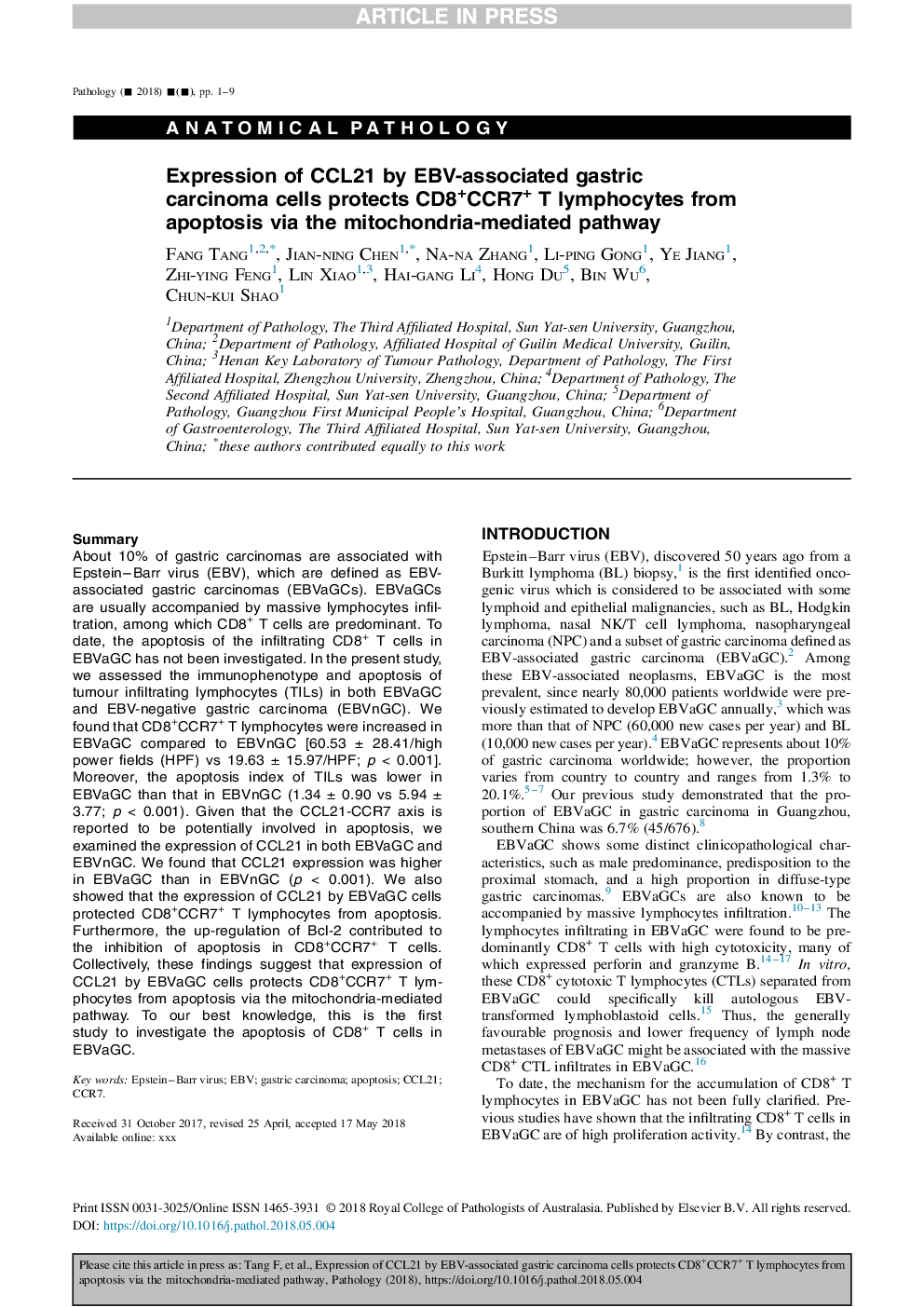| Article ID | Journal | Published Year | Pages | File Type |
|---|---|---|---|---|
| 10224980 | Pathology | 2018 | 9 Pages |
Abstract
About 10% of gastric carcinomas are associated with Epstein-Barr virus (EBV), which are defined as EBV-associated gastric carcinomas (EBVaGCs). EBVaGCs are usually accompanied by massive lymphocytes infiltration, among which CD8+ T cells are predominant. To date, the apoptosis of the infiltrating CD8+ T cells in EBVaGC has not been investigated. In the present study, we assessed the immunophenotype and apoptosis of tumour infiltrating lymphocytes (TILs) in both EBVaGC and EBV-negative gastric carcinoma (EBVnGC). We found that CD8+CCR7+ T lymphocytes were increased in EBVaGC compared to EBVnGC [60.53 ± 28.41/high power fields (HPF) vs 19.63 ± 15.97/HPF; p < 0.001]. Moreover, the apoptosis index of TILs was lower in EBVaGC than that in EBVnGC (1.34 ± 0.90 vs 5.94 ± 3.77; p < 0.001). Given that the CCL21-CCR7 axis is reported to be potentially involved in apoptosis, we examined the expression of CCL21 in both EBVaGC and EBVnGC. We found that CCL21 expression was higher in EBVaGC than in EBVnGC (p < 0.001). We also showed that the expression of CCL21 by EBVaGC cells protected CD8+CCR7+ T lymphocytes from apoptosis. Furthermore, the up-regulation of Bcl-2 contributed to the inhibition of apoptosis in CD8+CCR7+ T cells. Collectively, these findings suggest that expression of CCL21 by EBVaGC cells protects CD8+CCR7+ T lymphocytes from apoptosis via the mitochondria-mediated pathway. To our best knowledge, this is the first study to investigate the apoptosis of CD8+ T cells in EBVaGC.
Related Topics
Health Sciences
Medicine and Dentistry
Forensic Medicine
Authors
Fang Tang, Jian-ning Chen, Na-na Zhang, Li-ping Gong, Ye Jiang, Zhi-ying Feng, Lin Xiao, Hai-gang Li, Hong Du, Bin Wu, Chun-kui Shao,
